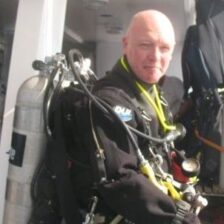Rosalie Moller
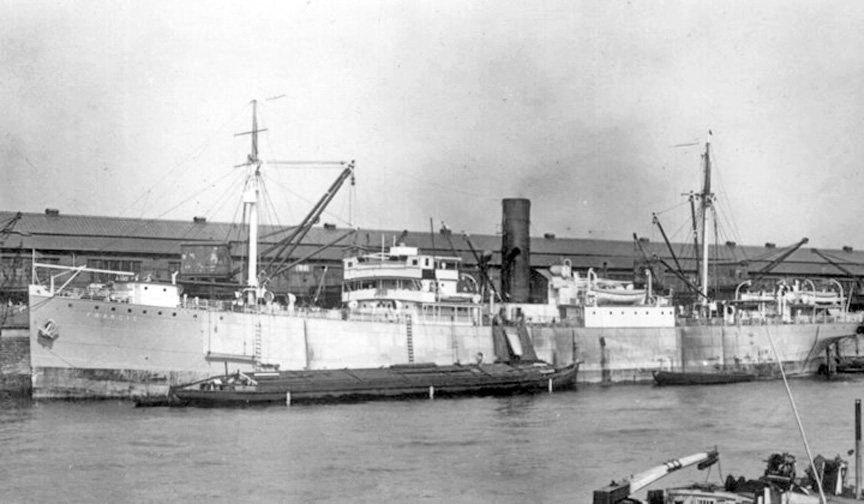
The Rosalie Moller began life in 1910 as the steamer SS Francis, built for the Booth Line of Liverpool by the Clydebank shipyard Barclay, Curle & Company of Whiteinch, Glasgow. The Francis was built to be an intermediate Passenger & Cargo ship, her capacity sufficient to take economic loads whilst able to accommodate some passenger trade. The Francis had accommodation for 17 First Class passengers, 5 x 3 bed cabins and 2 x 2 bed cabins, these would most likely see senior executives of the Booth Line, transiting to Manaus and back, or its premiere customers, (Booth Line had several larger “Tourist” vessels, notably SS Hildebrand & SS Hilary and others… far more luxurious than the SS Francis, for larger scale tourism & Grand Tour purposes) and perhaps some senior managers and foremen, essentially upper management. The SS Francis also had accommodation for up to 76 passengers to her stern in the No 4 Hold area indicated as “steerage”, she was also, ahead of her time, fitted with a “Marconi House” for a telegraph
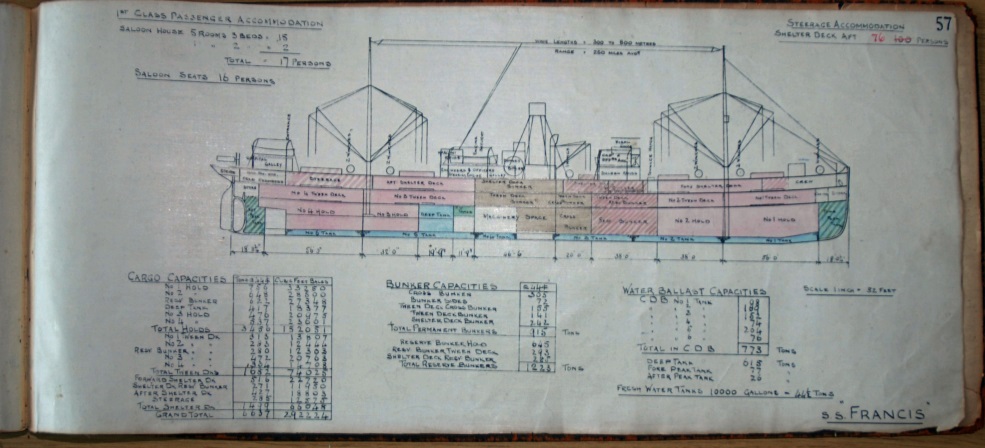
Barclay Curle & Company, shipbuilders, had a traditional Clydebank Shipyard, typical of the Scottish opportunists of the Victorian era, a yard having begun with sailing ships and progressed to building Iron, and eventually steel hulled vessels, as the industrial steam age accelerated the industries of Great Britain in the late 18th and early 19th century. Founded in 1818, by John Barclay, the yard was successful and, when John died in 1845 the sailing-ship business was taken over by his son, Robert, who took James Hamilton and Robert Curle into partnership as Robert Barclay and Curle. The name changed again in 1863, when Robert Barclay died, becoming Barclay, Curle and Co
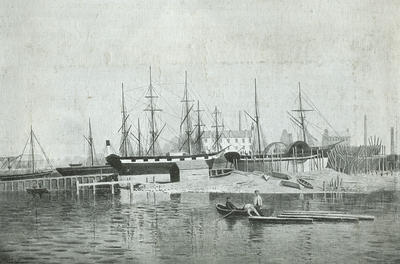
The SS Francis was a typical ship of her time, a triple expansion steam engine driving a single propeller shaft, producing some 400 or so nominal horsepower, and giving her a top speed of 11 knots. The Francis was a workhorse, reliable, well designed, and using dependable technology, in order to ensure the Booth Line many years of service, hauling Leather and Rubber in her Four spacious holds, configured Two to her For’ard and another Two to her Aft. The Francis was a good looking, utilitarian ship, economic but attractive in a kind of “industrial” sense, exactly what the Booth Line wanted for the long journey to Brazil and the colonies
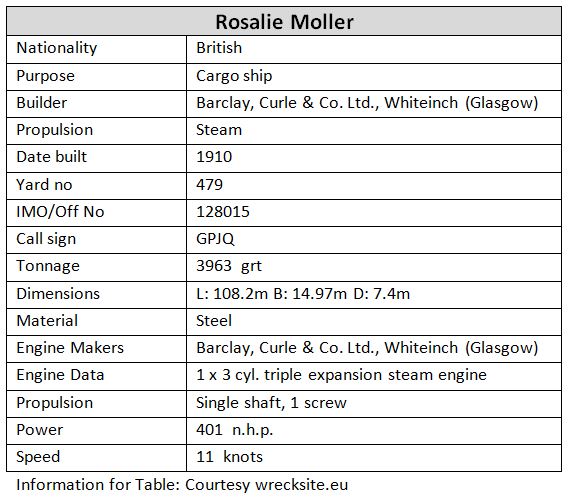
Additional Details:
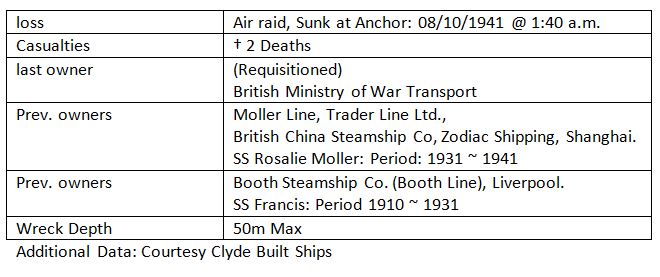
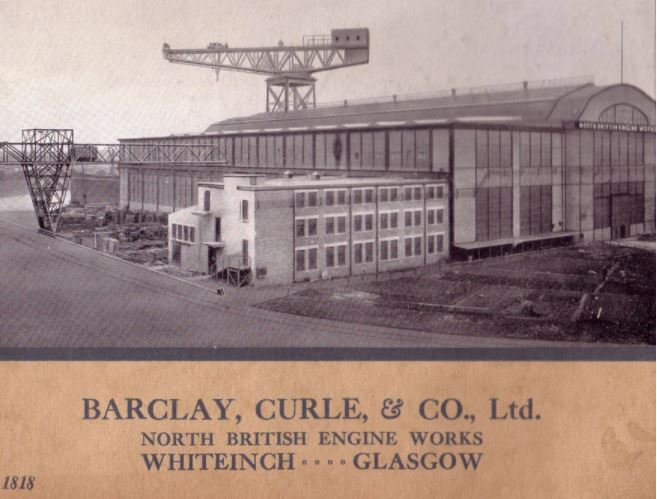
It would only be two years after the successful delivery to Booth Line (in 1912) that the Barclay & Curle Shipbuilding business would be taken over by Swan, Hunter and Wigham Richardson, including the Clydeholm and Elderslie shipyards and dry docks, and the dry docks in Govan. You might remember Swan Hunter Wigham & Richardson built the Port Napier, another Clyde wreck on this site……..another 6 degrees of separation!
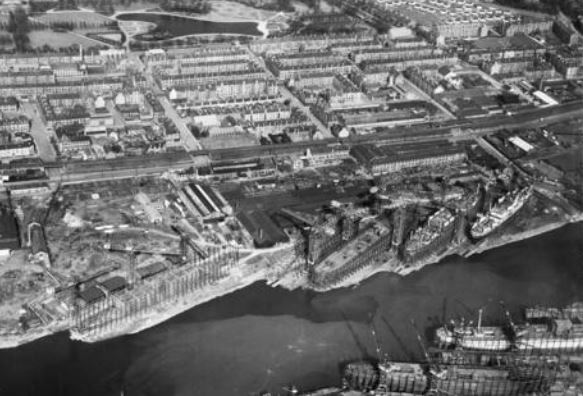
Barclay Curle & Co had begun making their own engines in 1857, they were Steam driven, largely triple expansion engines from what I can determine. The SS Francis was certainly fitted with a triple expansion engine, and it was one of Barclay & Curles’ own designs with an output of 401 horsepower, the boiler likely of the Inglis Marine design of 1909, illustrated in the Barclay & Curle trade advert from Graces’ Guide (Grace’s Guide: “Barclay, Curle & Co” illustration 3 “Inglis Marine Boiler”. https:// www.gracesguide.co.uk/ Barclay,_Curle_and_Co Accessed: 09/01/2022) shown below

Triple Expansion engines work by passing steam (from boiling water), under pressure, into a chamber containing a piston, the “Triple Expansion” method makes use of the highest pressure in the smallest cylinder first, the expanding (cooling) steam then passes into a second slightly larger (slightly lower pressure) cylinder, activating a second piston, and then finally the steam moves into the largest, lowest pressure cylinder where it activates a third piston. Following the expansion, or driving, cycle the remaining steam is passed into a condenser which re-cycles it back, as water, to the boiler for re-use. If you want to see an example of a Triple Expansion steam engine sat on the sea-bed, then look up the video of the Torpedo Alley wreck “Caribsea”, which will eventually be loaded on this site…………. Craig and I get to swim around the engine from the Steamer Caribsea, in the Atlantic, on the North Carolina coast, and it gives you some idea of a smaller sized triple expansion steam engine, and offers some perspective of scale
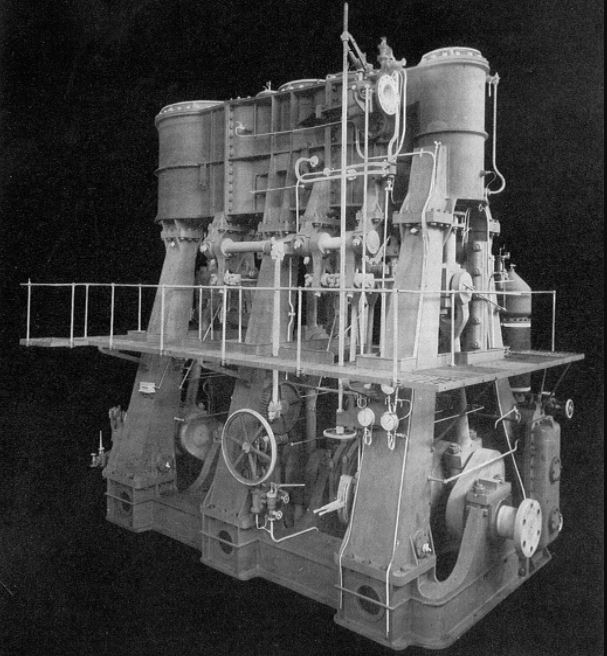
The Clydeside shipyards mostly relied on the heavy lift cranes at Glasgow Harbour, at the western end of Plantation Quay, for fitting engines, transmissions, and the larger plant into the ships they constructed. The first built was the Clyde Villa Crane, capable of lifting up to 130 tons. (“Finnieston Crane, History” Online Resource: https://www.scotlandguides.org/tour/finnieston-crane-glasgow-3281.htm Accessed: 18/11/2021) installed in the 1890s in Princes Dock, in front of Govan Town Hall
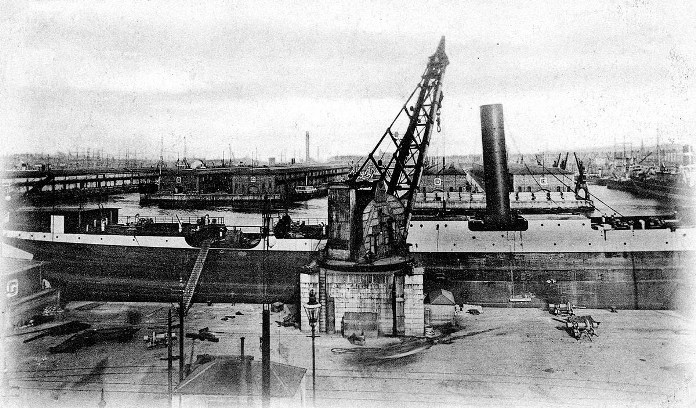
A sister crane (The Finnieston Crane) was located a bit further upriver on the site now occupied by the City Inn. These cranes would eventually be complimented by “Titan” cantilever cranes, luckily Scotland is proud enough to have kept these reminders of their shipyard history, and examples of the Titans can still be seen alongside the Barclay, Curle & Company buildings and in the Glasgow port
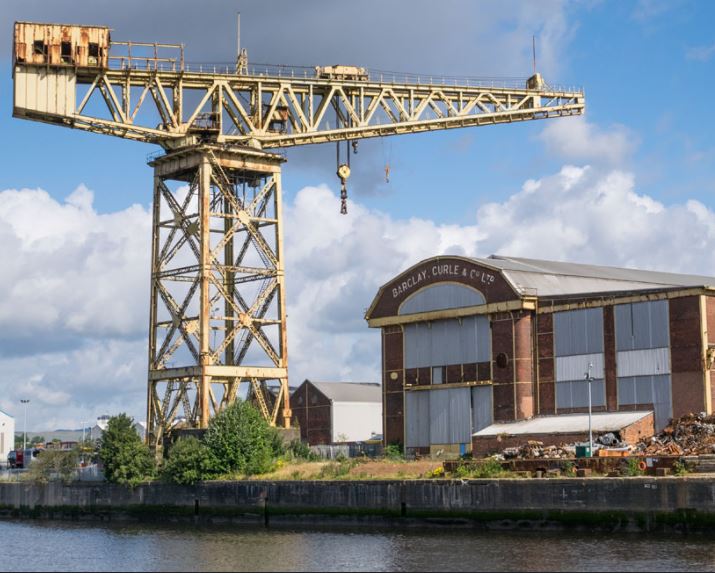
The SS Francis owners, Booth line, were trading in Leather exports, Rubber imports and passenger routes between Liverpool and the Amazon basin. In 1910 the global rubber trade centered around Manaus, 94% of the substance originated from the Amazon region, Amazonia, and this was shipped via the River Negro (Rio Negro) primarily by the Booth Line, the most significant traders in Amazonia, with palatial offices in the town that would not have looked out of place in any British city, typical statement edifices, not unlike those in the City Centre of Liverpool itself
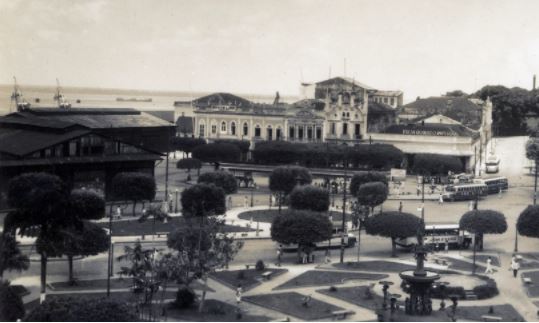
Discovered by Spanish explorers in 1499, the mouth of the Amazon River is 70 odd miles wide, Francisco Orellano sailed it in 1542 and it was settled at Sao Jose de Rio Negrinho in 1699 (“Port of Call, Manaus” Middlemiss, N. Oct 2021 in “Features” Online Resource: https://www.shippingtandy.com/features/manaus/ Accessed: 20/11/2021). “…….the Rio Negro and Solimoes rivers that combine to form the mighty Amazon leading eventually to the sea. The black waters of the Rio Negro form a black diving line with the brown waters of the Solimoes at the junction, and do not mix together for many miles downstream” The situation and environment conjures scenes from the Roland Joffe film The Mission, not a million miles from the exploration and early settlement of the Amazon Basin, and the challenges met on the Rio Negro I imagine?
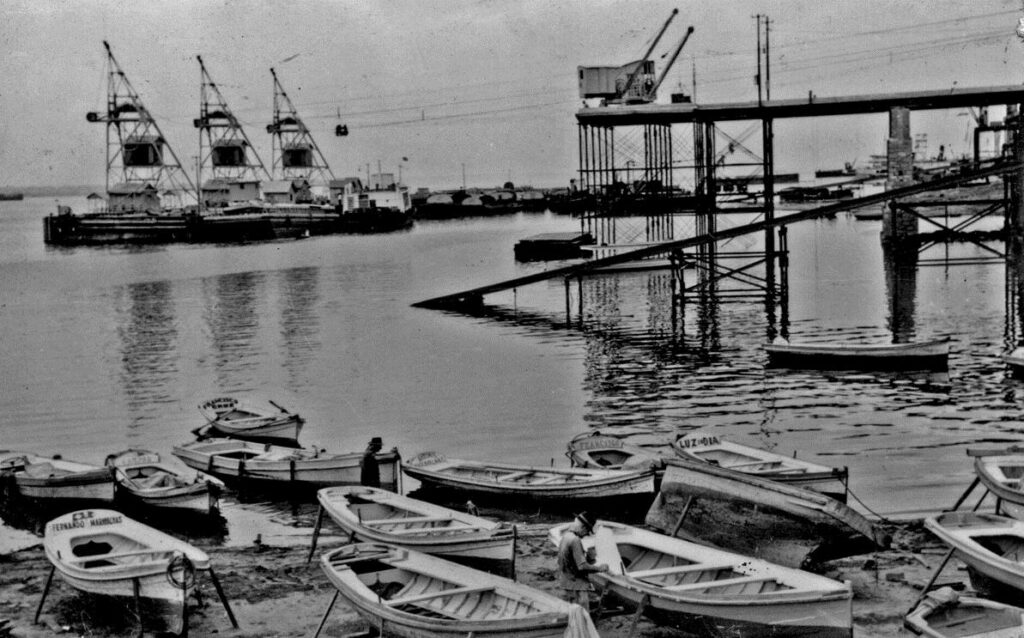
Manaus, the capital of the Amazonas State of Brazil, is situated in the heart of the Brazilian rainforest 900 miles inland from the Atlantic coast in an area colloquially known as the “Amazon Basin”…..There is another more descriptive name for the area….”inferno verde” which translates as “green hell’. There were two million square miles of tropical rainforest in the Amazon Basin in 1900, with an average temperature of 25’c, the Rio Negro and its tributaries feed the Amazon River and, as Manaus is only 302 feet above sea level, navigation from the distant South Atlantic using both rivers, allows travel to Manaus by vessels such as the SS Francis. There are two floating wharves in Manaus’ Port (Paredao and Malcher). The Paredao has four deep sea inside and outside berths, the Malcher floating platform is for river passenger craft and fishing boats. The snows of the high Andes melt and flood the Rio Negro in February and March, receding in June. A record 29.97 metres was recorded at Manaus in 2012, (ebb level of 13.63 metres) a range of almost 16m, as a result all waterside properties in Manaus were built on stilts
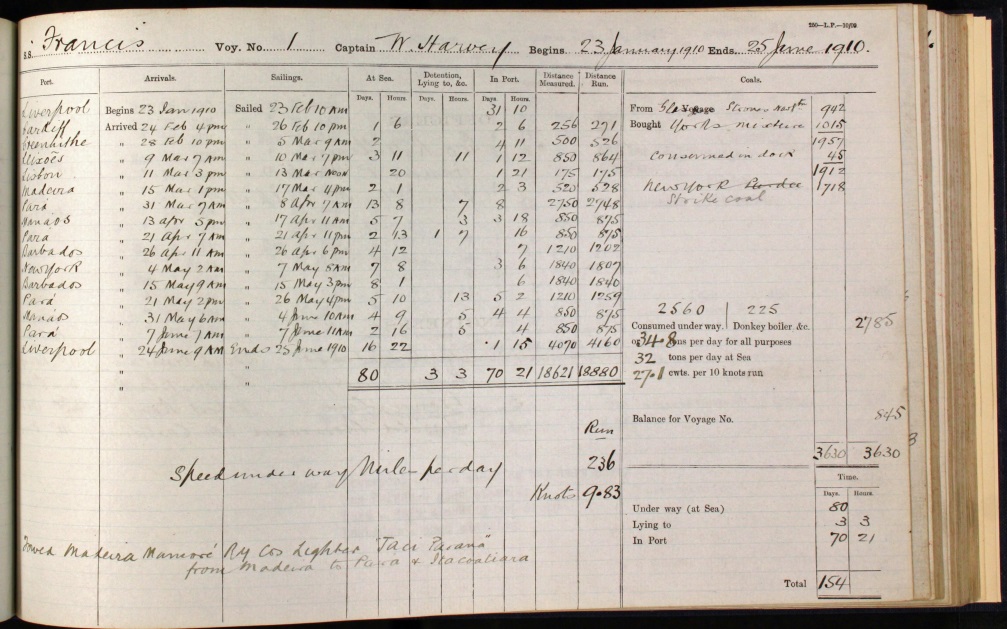
Founded in 1866 by Alfred & Charles Booth, “Alfred Booth and Company” was a British trading and shipping enterprise, born in Liverpool, that would eventually trade for more than a century. The company was managed well, and grew to become a significant merchant shipping company, with commercial interests in the United States and South America, specifically, in the time of the SS Francis, Brazil and the Amazon Basin
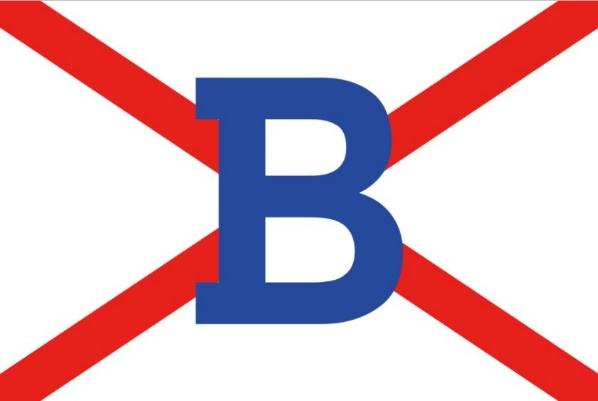
House Flag Booth & Co Liverpool (Web Photo: Courtesy Wikipedia)
Liverpool, in Victoria’s reign, was a thriving hub of empire, it was also a centre of industrial development, seeing the birth of the railways of Great Britain, the transition from wooden sailing ships, to Iron, and then Steel hulled steamships, and the immense wealth associated with global trade and commerce. Alfred and Charles Booth worked together at Lamport and Holt Shipping Company in Liverpool, they were cousins of the owner, and co-founder of Lamport & Holts, William Lamport. In 1851 Lamport, transferred shares in the SS Nile, a cargo steamship, to Charles Booth and George Holt. Booth, and Holt’s father, later took minority shares in another of Lamport’s steamships, the Orontes, meaning Charles Booth had shares in the Nile and one in the Orontes. In yet another of those 6 degrees of separation George Holt would, with his brother, Alfred, eventually establish the Blue Funnel Line in Liverpool

In 1862 Charles Booth joined his eldest brother Alfred, and invested part of the £20,000 his father (also Charles) had bequeathed to each of his 5 children, on his death, in the construction of two steamships, the Augustine and the Jerome. The Booth brothers’ acumen grew the Booth Steamship Company, slowly building up a substantial fleet, to carry merchandise to and fro across the Atlantic. The enterprise was very successful, becoming a huge concern which had interests in many countries, especially the Amazon River trade of Brazil. Charles Booth was also something of a radical in his time, he was a philanthropist and champion of the poor, devoting 17 years to the study, and detailed reporting, of the grievous social conditions suffered by the Victorian working classes in London. Booth, pictured above in an unusual manner for the time (perhaps specifically to emphasize his “difference” from traditional Victorian gentry), shows him in an almost scruffy, casual pose, tie somewhat adrift, aloof, but with piercing, if distant stare

Charles Booth funded his own research, and his business interests, throughout those years and tirelessly campaigned for the introduction of old age pensions, laying the foundations of Bevan’s welfare state through the influence of the “Beveridge Report” of 1942 on “social insurance and allied benefits” where the post war “home for Hero’s” was supposed to become reality, and the rhetoric espoused nirvana, “Now, when the war is abolishing landmarks of every kind, is the opportunity for using experience in a clear field. A revolutionary moment in the world’s history is a time for revolutions, not for patching.” (National Archives: “The Beveridge Report and the foundations of the Welfare State” Online Resource: https:// blog.nationalarchives.gov.uk /beveridge-report-foundations-welfare-state/ Accessed 19/11/2021) Charles would remain Chairman of the Booth Line until 1912. Charles Booth retired and passed the chairmanship to his nephew (Charles Booth 1868 – 1938) in 1912, however, in 1915 he returned to help the company get through the First World War, but sadly died in November of 1916 before the war ended. Charles memorial is on a tablet in St Paul’s Cathedral:
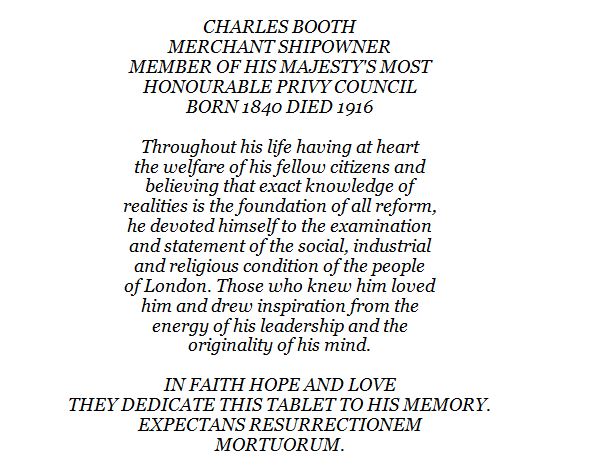
By 1914 the Booth Line fleet had more than 30 ships, 11 were requisitioned for war service, Booth Line lost 9 to enemy action, by 1919 only 18 ships remained. There were no more ships built between 1919 and 1927, a ship was purchased from Germany, perhaps the war office reparations fleet, re-named Dominic. The Booth Line renewed another 7 vessels and bought another second hand ship between 1928 and 1935, but in 1931, having given the Booth Line two decades and more of stirling service, between Liverpool and Brazil, with the demise of the India Rubber trade out of Manaus, the SS Francis was about to change ownership….. Not only was the Francis now 21 years old, but the route she had sailed, and the trade goods she had carried, were now dwindled to almost nothing. The monopoly on the rubber tree, (up until then only grown and harvested in the Amazon Basin and Brasilia’s) was broken when, In 1876, British traveler Henry Wickham stole (or exported, depending on your perspective), 70,000 seeds of “Hevea brasiliensis”, also known as the Para Rubber Tree, and seeded areas of Southeast Asia (including Ceylon (Sri-Lanka) and Malaya (Peninsular Malaysia), then under British Empire control), in order to break the Amazon monopoly and gain control of the product for Britain
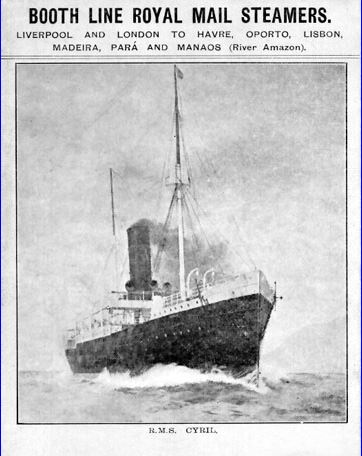
By the 1920’s it was becoming less and less economically viable to trade rubber out of Manaus, “By the early twentieth century the economy of Manaus entered a downward turn, as managed plantations in Malaysia outperformed Brazilian forest extractors. Whereas in 1909 Amazonian rubber constituted 94% of the world supply, by 1918 it had fallen to 10.9%. The Amazonian rubber boom was over,” (“An End to Difference Imagining Amazonian Modernity at the Dawn of the Twentieth Century” 2018 Chernela, J & Periera, E. P28, Para 2. Online Resource: https:// anth.umd.edu/sites/anth.umd.edu/files/2018chernelaboom.pdfAccessed 14/11/2021). The monopoly the Amazon Basin held over rubber extraction had been effectively, and fatally broken, (“Rubber in Brazil: Dominance & Collapse, 1876-1945” Resor, R. R. Online Resource: https:// www.jstor.org /stable/3113637 Accessed 19/11/2021) “For the first few years of this century, Brazil was the major supplier of rubber to the world. However, the Amazonian wild rubber industry was unable to compete, in either price or quality, with the Asian plantation rubber that began to appear on world markets after 1906. Development of a successful plantation culture in the Amazon seemed imperative, but even with public subsidy, plantations remained an economic impossibility. By 1945 the Brazilian rubber industry, overwhelmed by Asian production, had virtually disappeared”
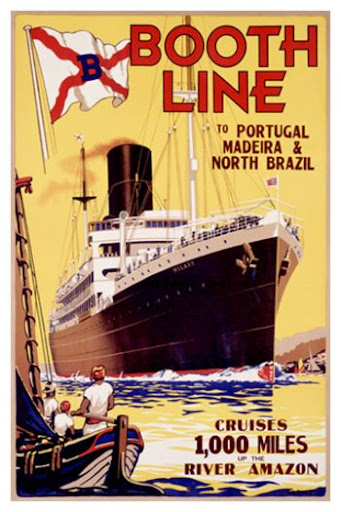
Chernela and Periera write a succinct and telling obituary on the rubber industry of the Amazon basin and the decline of Manaus as an exporter: “…..with no export commodity to replace rubber, the city entered a period of stagnation. The population contracted to a fraction of its former size, dependent for revenue on the export of a few raw forest products with limited markets” and the Booth Line stalwart the SS Francis was duly sold on to Nils Moller of Moller & Company Shipping, a Shanghai based Swedish Company

Nils Möller, a Swedish sailing-ship Captain, suffered the death of his first wife Jenny in 1859, the effect this had on him must have been very significant as it prompted him to sail his brigantine, the Osaka, to China looking for commissions (Online Resource: https://www.myheritage.com/site-186892972/moller Accessed 14/11/2021). Captain Moller not only found cargoes there, but must also have fared well, as he ended up in an argument with the Swedish government over the right to fly Swedish flags on his ships. It was apparently forbidden for a Swedish national, living abroad, to fly the Swedish flag, and that seems to have caused Nils to register his fleet of ships in Great Britain, more so, he removed the umlaut (double dot) from over his last name, presumably in anger or frustration, and declared himself a citizen of Shanghai!
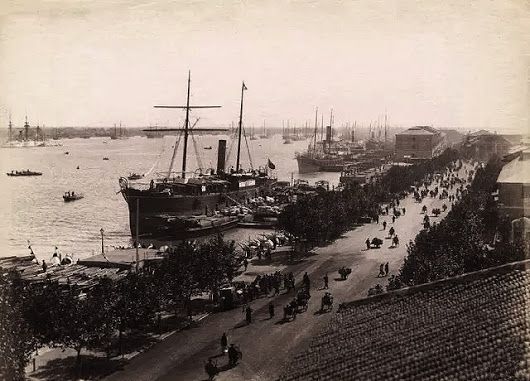
Nils operated sailing ships from 1882 on the China routes and to Eastern Russia, Japan and the Philippines, sailing out of Shanghai, and he obviously liked the place, settling down and having two more families, one with Alethea Stephenson, and a later one with Hannah Clappison. In 1903 Nils’ two sons took over the business and it was registered as Moller Bros, in 1907 ownership was taken over by Eric Moller and the name changed to Moller & Company. In 1910 the Moller Co bought their first steamship, the same year the SS Francis was launched, Moller Line & Company prospered in Shanghai, opening several subsidiary companies and trading globally, until Moller shipping became the largest fleet of tramp traders in the China Seas, only ceasing to trade in the early 1980’s
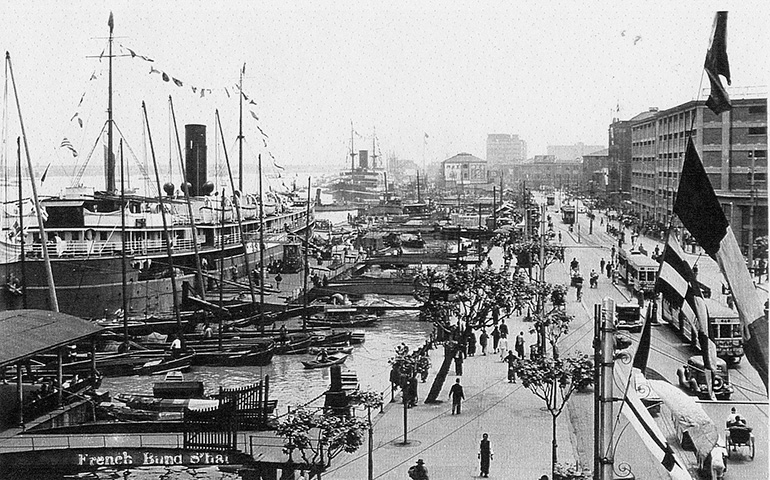
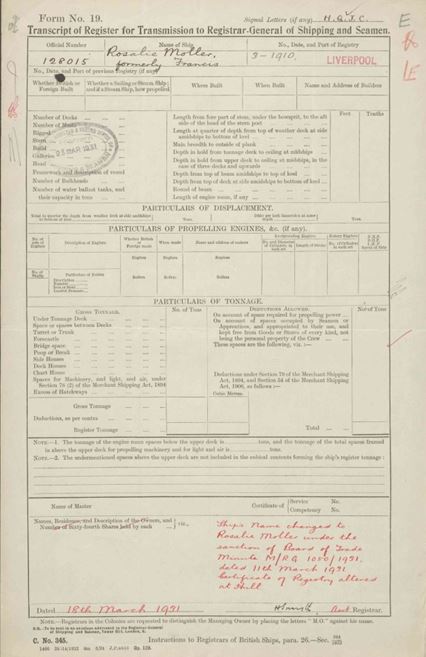
The SS Francis was re-named the Rosalie Moller in the tradition of the Moller line, named after one of the Moller children although, to present date (20/11/2021), I can’t find which line of the family Rosalie Moller belongs to. In 1938 the Rosalie Moller was requisitioned by the Admiralty as a collier, transporting Welsh mined coal to a variety of UK Naval Ports. In 1939 she was running between Yokahama and Shanghai and Shanghai and Hong Kong, with occasional trips to Singapore and Haiphong. In December of 1939 The Rosalie Moller found herself directed from Singapore to Calcutta, a return journey which she would repeat in February, departing Singapore on the 22nd Feb arriving in Calcutta on the 29th and returning to dock at Shanghai 27th of March. 1940 heralded a change of scenery for the Rosalie Moller, there is no movement noted between April & September of 1940, and it is believed she was given a full overhaul around that time
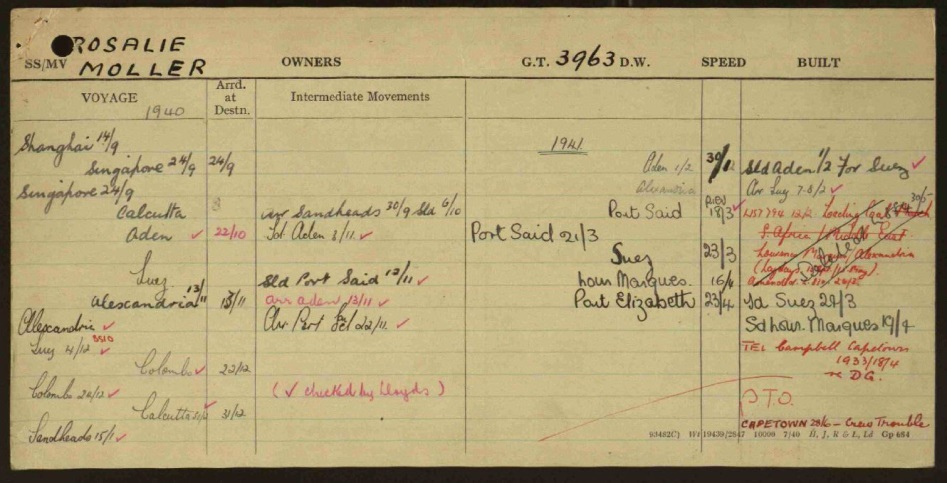
In September of 1940 the routine for the Rosalie Moller changed, and her route was altered to put her in Alexandria, Egypt (via Singapore, Calcutta and Aden), at Port Said for the 12th of November of 1940. From Alexandria she sailed to Columbo on the 22nd of November arriving on the 22nd of December from there she sailed to Sandheads Calcutta on Christmas Eve, arriving on the 31st December and departing 15th January 1941 when she sailed to Aden arriving on the 30th. From Aden she journeyed to Alexandria arriving at Port said 18th of March, after a quick turn-around the Rosalie Moller was dispatched via Mozambique, South Africa (@ Lourenço Marques, 19th April), to Port Elizabeth, arriving on St George’s day, the 23rd of April. It seems there were some repairs carried out there which completed on the 05th May, not without the mention of “crew trouble”, however nothing more is noted, so what “trouble” that might have been is lost to history….
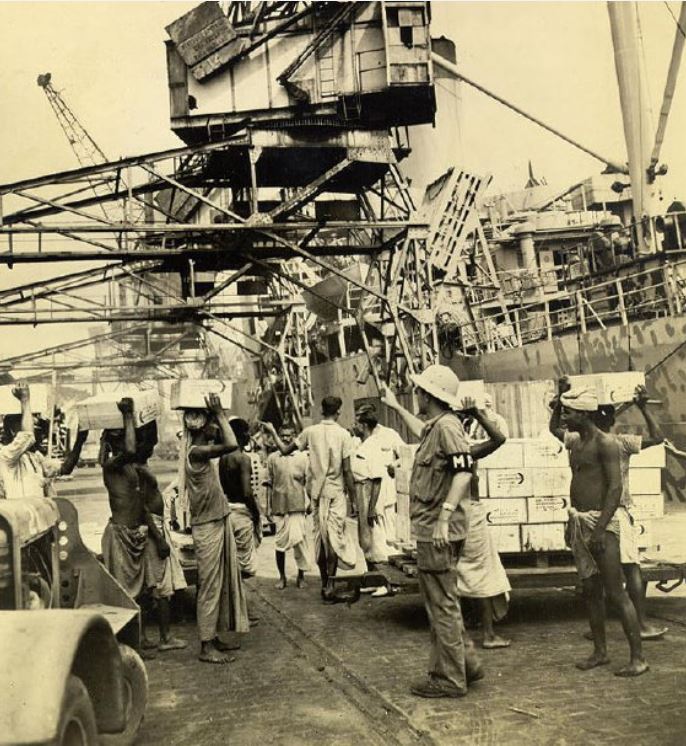
In July 1941 the Rosalie Moller was re-allocated to S.T.N.8, the Admiralty Collier Service, however it would not be until the 19th of August that Rosalie Moller sailed again, this time to Durban, South Africa, arriving it seems on the 25th of August, having been expected on the 21st and there is a note of repairs in Port Elizabeth 18th of August to 22nd of August for some reason? Although she did not know it, it seems time was running out for the Rosalie Moller, her next assignment was to Capetown, 13th of September, but again there is a note of repairs and dates of the 30th August and 11th of September, clearly something wasn’t right with Rosalie Moller, but whatever it may have been, she sailed again from Durban on the 11th of September bound for Aden, arriving on the 28th of September
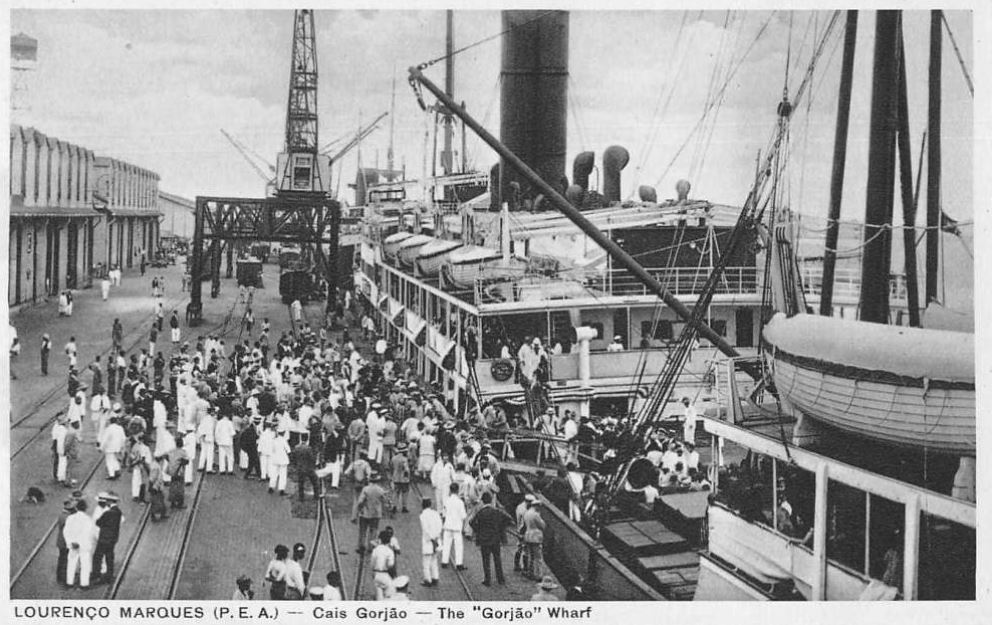
Leaving Aden on the first of October for Alexandria, under the command of Australian Captain James Byrne, and laden with 4680 tons of coal, the Rosalie Moller was to use the Suez Canal to reach Alexandria on the 9th October, but fate had other plans for her. A collision of ships elsewhere in the canal meant that Rosalie Moller was unable to transit the Suez Canal and was directed to “Safe Anchorage H, Towala” until the way was cleared
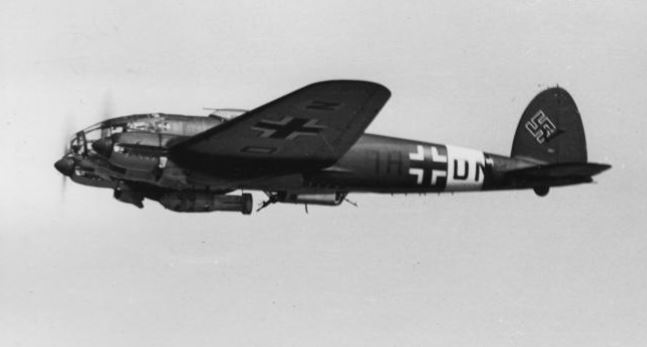
On 5th October 1941, German Intelligence reports believed the Queen Mary had been sighted in the area and dispatched 2 Heinkel HE111’s on a search and destroy mission. The Queen Mary had indeed been running from Suez to Trincomalee (Ceylon, modern day Sri-Lanka) under command of her master, Captain Irving. She had completed two trips, carrying troops and supplies, from the 16th September to 23rd September, and again from September 24th to October 01st…….but the Heinkel’s missed her…..
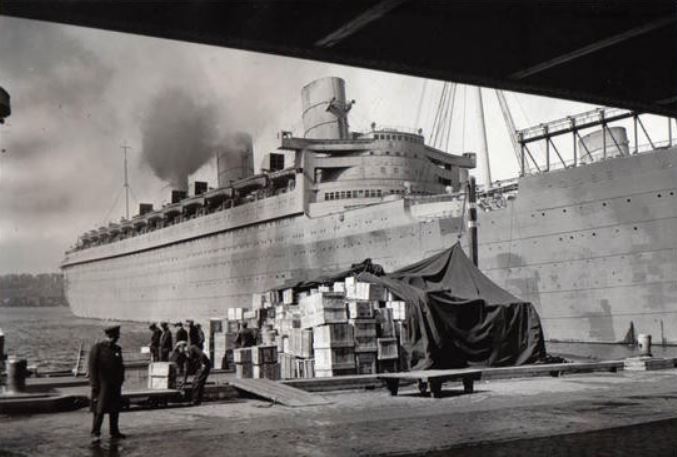
The Heinkel’s sent to find the Queen Mary were from Kampfgeschwader 26 (KG 26) which translates as bomber wing 26, the nickname of the group was “Löwengeschwader” or Lions’ Wing, taken from the insignia, although the translation reads more closely as “Lion’s Shield”. The Germans formed its Luftwaffe long before it was officially revealed in the Spanish Civil War, KG 26 were part of the then, newly formed, “flieger-Division” which included several different types of aircraft (also JU87’s, JU88’s and ME110’s) specific to different roles. The Heinkel HE111’s were bombers (designed by Siegfried and Walter Günter at Heinkel Flugzeugwerke in 1934), KG 26’s HE111’s were primarily anti-shipping aircraft, under the command of Generalleutnant Hans Geisler as of 03rd September of 1939. Originally stationed in Germany as part of 10 Fliegerkorps, KG 26 was transferred to Norway in 1940, following the sinking of two of its own battleships, the Leberecht Maas and the Max Schultz (Operation Wikinger, February 1940), and then from Norway to Sicily in 1941 to support the Afrika Korps. Over the 17/18 January 1941, 12 of KG 26’s He 111s were sent to bomb the Suez Canal, however they did not have the range and 1. Gruppe lost seven machines to fuel starvation. On 31 January KG 26 sank the freighter Sollum and minesweeper Huntley, the unit also took part in missions over Malta, losing its first aircraft on 8 February 1941. Those of you who relish research can dig further into KG 26 in the book “Die Spur des Löwen” or “The trail of the lion” in English, (Alex Steenbeck) although it’s a challenge as the book is in German and there is no plan to release an English translation
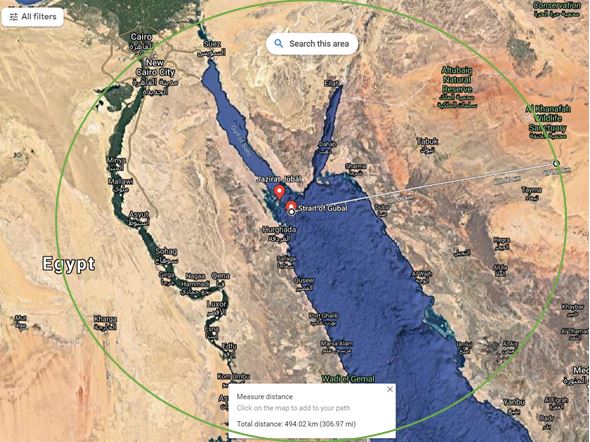
Personally, I have a problem with the HE111’s as a presence in the Gubal straits, where Thistlegorm and the Rosalie Moller were anchored. As KG 26, 1. Gruppe had already seen (losing 7 aircraft in an attempt to bomb the Suez Canal earlier in 1941), the HE111, with a range of only 680 miles, could not have reached the Gubal area without re-fueling for the return or landing locally. If the Luftwaffe records are accurate, and for the most part at that time of the war they were better than any allied records, the locations of the X korps KG 26 HE111’s in 1941 are tabled below (X Fliegerkorps in “Air Ministry A.H.B. 6 Translation of Enemy Documents” Online Resource: http:// www.ww2.dk/misc/obmed .pdf Accessed: 20/11/2021). The main of the HE111’s were at Comiso, a distance from Comiso airfield (on Sicily) to Gubal of 1,311 miles, one way. The only aircraft that could possibly have patrolled Gubal would have been those of St.G 3, based in Libya, which are anecdotal (in the comments column) to the records, giving no idea which airfield, how many there were, or from what Korps/Gruppe

Whichever Airfield was used, fate played out her hand, and the Heinkel’s sent to find the RMS Queen Mary on the 06th of October found only the merchant vessel SS Thistlegorm, sat at anchor, awaiting a passage through Suez to Alexandria, and so they bombed her to the bottom of the Red sea on October 6th 1941. It is said that the explosion from the Thistlegorm was so massive that it lit up the night sky, exposing another ship lying in Anchorage H, and in a final, bitter irony, the Heinkel’s spotted her and returned on the 8th October to send the Rosalie Moller to the sea bed

The only realistically achievable patrolling by HE111’s would be from Egyptian or Libyan airfields and, although those were sometimes available, they were constantly changing hands as the Allies overran strategic air-fields in offensive actions, or the Germans re-occupied airfields on counter-attacks. Even the authorities at the time had issues with the information available: “Sunk by Heinkel 111 bombers from No. 2 Squadron 26th Kampfgeschwader based in Crete bombing during night of 7-8/10/1941 at Anchorage “H”, Towala, Gulf of Suez (Durban for Alexandria with coal)(until 6/10 the Towala anchorages had been thought to be beyond the range of German bombers)” reported in many of the dive and steamship details for the SS Francis and Rosalie Moller alike, (“FRANCIS, Disposal Detail” Online Resource: http:// www.clydeships.co.uk/ view.php? ref=1616 Accessed 21/11/2021) I have trolled many archives, (the Air Ministry A.H.B 6 Translation, Henry deZeng’s “Luftwaffe Airfields 1935-45 Greece, Crete and the Dodecanese” (https://www.ww2.dk/Airfields%20-%20Greece%20Crete%20and%20the%20Dodecanese.pdf) and several Luftwaffe interest sites too), but failed to come up with a plausible location for KG 26 to have attacked the anchorages at Gubal, that doesn’t mean it wasn’t KG 26 HE111’s that took down Thistlegorm & Rosalie Moller, it just means there are more pieces to fit in the puzzle!
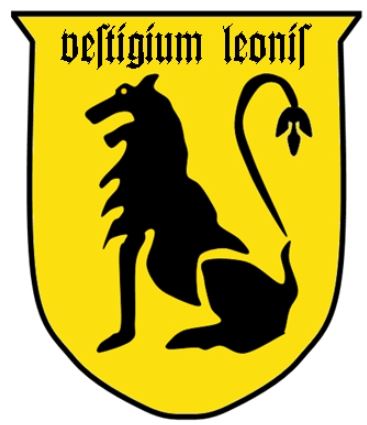
Rosalie Moller was hit once, on her Starbord side between No4 and No3 hold, her cargo was coal, there was a high chance of a secondary explosion from accumulated dust, this was the Gubal area of Egypt and temperatures are always high, but there was no report of a secondary explosion and casualties were, thankfully, as low as could be hoped for in the circumstances, only two of the crew are noted to have died when Rosalie Moller went to the bottom, it is likely they were killed in the initial explosion

I first dived the Rosalie Moller in November of 2008, I had been told about her a couple of times by divers who compared her to the Thistlegorm, but said Rosalie was better than Thistlegorm. At the time I couldn’t take what was being said seriously, Thistlegorm was the most iconic wreck I had dived, the idea that the wreck of a Steamship, carrying a cargo of coal, could be better than Thistlegorm with all her splendor and variety was, to say the least, stretching my imagination….. But I would get to find out, Craig and I had just completed the “three dives in one” on Abu Nuhas, using nitrox to extend our dive times and keep the deco manageable, and Rosalie Moller was next up on the Liveaboard itinerary
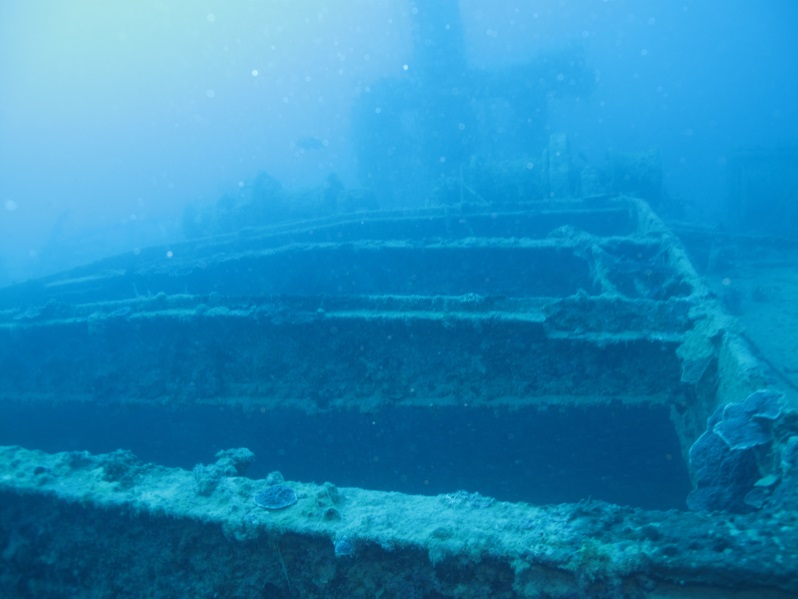
The little Red Log was full, the Rosalie Moller was one of the first couple of wreck dives I wrote up in the Green Navy Log and it records: “26/11/08 ROSALIE MOLLER – EGYPT This is the second raid victim of the Thistlegorm saga being spotted by the returning Heinkel HE111 who went back the next day and sank her at anchor we dropped straight down to the prop which is very large with the stern & rudder making a great sight round the port side and up to mid ships to drop into the hold in front of the collapsed engine room. Sadly a diver died when this collapsed early in this year. We swam through into the next hold towards the bridge and then under the collapsed funnel. We went down the bridge deck corridor past the tool room and captains bath. Round over the stern & to the starbord bridge deck corridor and through that to pass over the holds & run to the mast and on to the bows. The bow winches and hatch covers are awesome looking back from the bow light post. Shoals of Glass fish all over the wreck being attacked by Trevally – lots of Fusiliers and other fish about – literally alive with fish. Back to the mast and then over the bridge to start deco an amazing dive a fantastic wreck. Air and 50% Buddy Nick”
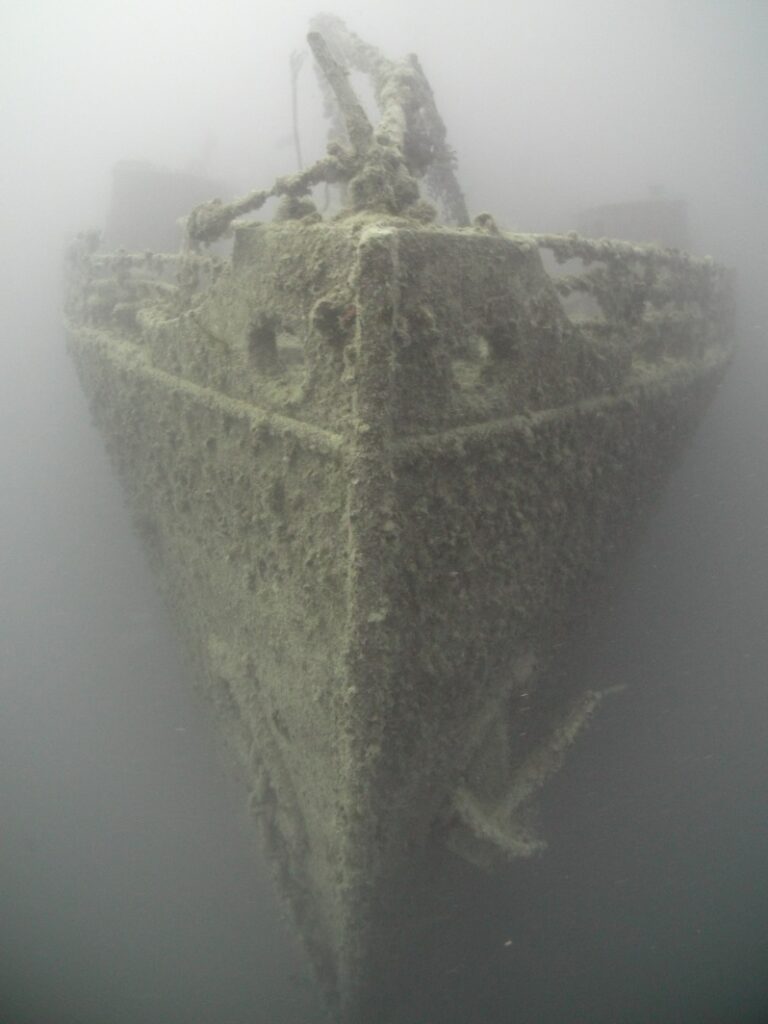
I have to say, the sight of Rosalie Moller, appearing out of the blue haze as we descended the shot line, was impressive. Whilst Thistlegorm is a very damaged ship, a large area of her stern essentially blown off her hull, and a mass of tangled and rent metalwork where her cargo holds burst and her decking peeled back, Rosalie Moller is a complete ship, she looked as if she could have been sailed away, although her funnel lay over to her Port side the rest of her was just as she sank in October of 1941. As Rosalie is a deeper wreck we needed to see as much as we could without getting into too long a deco requirement. As is always the case, first dive on a new wreck is a tour and look around, we dropped to the prop first, it’s the deepest part of the wreck at 50m or so and, as always a main attraction of any wreck, Rosalie has a wonderful Prop & Rudder set amidships as can be seen in Derek’s photo. The return to her deck and subsequent tour is written up without much mention of the huge shoals of glass-fish we encountered and the multitude of life aboard her. Although Rosalie Moller has not a massive amount of soft or hard corals on her she teems with fish of small to mid-size, almost everywhere you go, but especially around her mast base, I have yet to see much in the way of the larger fish on her though
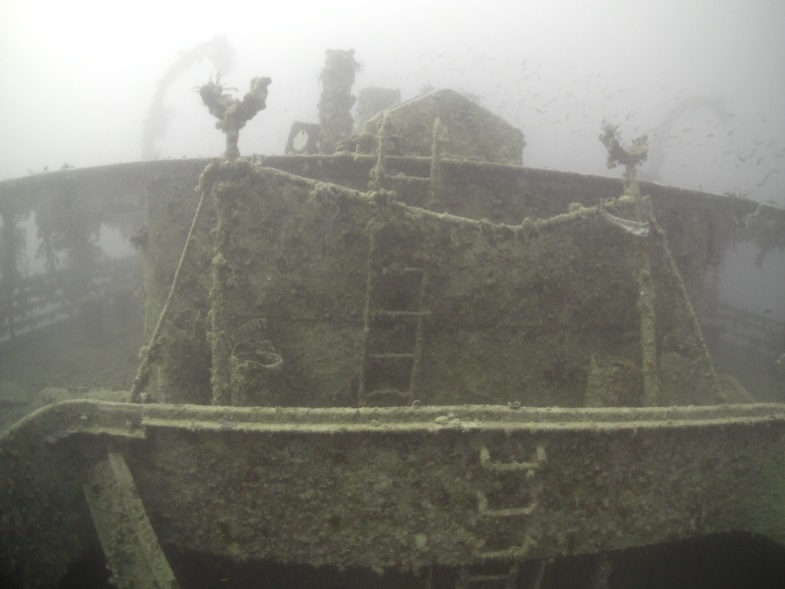
The superstructure is all there, Rosalie has great companionway swims for those diving her initially, and there is plenty of space in her holds to drop down a level to safely explore a little further too. The funnel, brought down by the most idiotic of skippers in 2001, in an attempt to pull the steam whistle away by tying a line to it and towing it off the funnel, now lies over to her Port side and you can look right down the length, it’s a temptation, and an effort not to try to swim through, but that’s another rather reckless thought considering the stiffeners within…… I loved Rosalie Moller more with every minute, it was beginning to be apparent why some considered her better than Thistlegorm, I still wasn’t sure of that at this point, but the complete nature of the wreck, the minimal damage (her No3 hold has the bomb hole which sank her and which would become an entry point in later dives on her) to her throughout, and the opportunities to see all of her as she had been on the day, a time-capsule, immediate and undeniable…..Rosalie Moller had made her impression on me
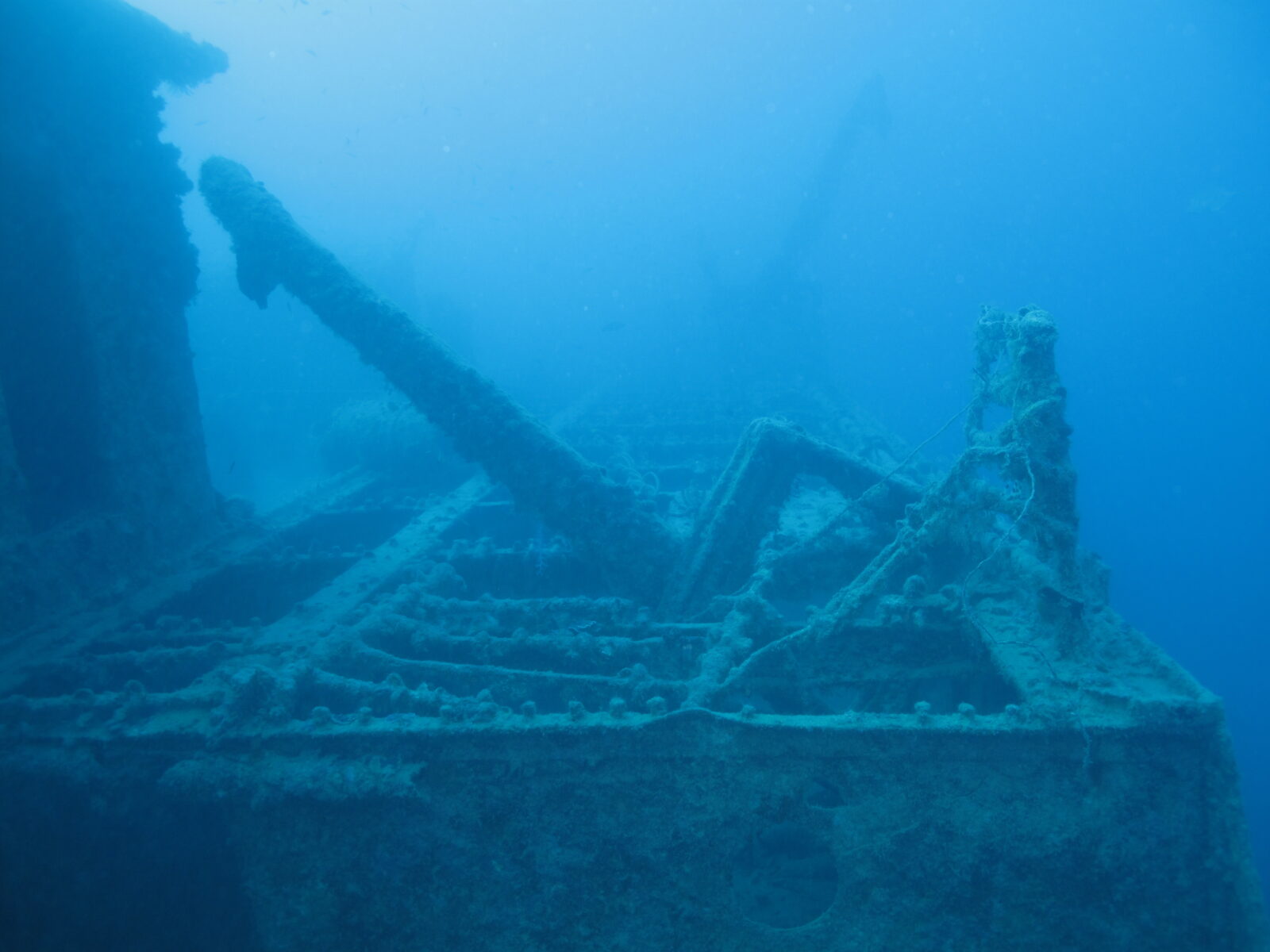
In 2010 I had the chance to dive Rosalie again, this was off the Tornado Fleet Vessel MV Hurricane, another great boat and one who’s captain was excellent, allowing us to choose our dive-sites within the areas he was scheduled to travel, there will be more on that in other wreck dives on here in the future…. But this was Rosalie Moller in April of 2010 and the Green Navy Log tells us “ Gubal Island “ROSALIE MOLLER” I love this wreck –tragically the stern mast is now down but still intact as the day she was hit by Heinkel HE 1111’s down the shot and along the starboard rails to the bow to 42m & then back up to the bow winches & into the forward hold along and between holds to come out on the deck just in front of the funnel across the bridge & along the starboard companionway & into the galley past the stove and out @ centre deck facing the stern passing a huge Lion Fish & tiny Peppered Moray. Dropping into the stern hold to cross and come out of the blast damaged deck & raise up onto the main deck again across the downed mast by the two huge winches & on up to deco for 29 mins Viz 10-15m buddy Craig Air In 200 Out 100” …….
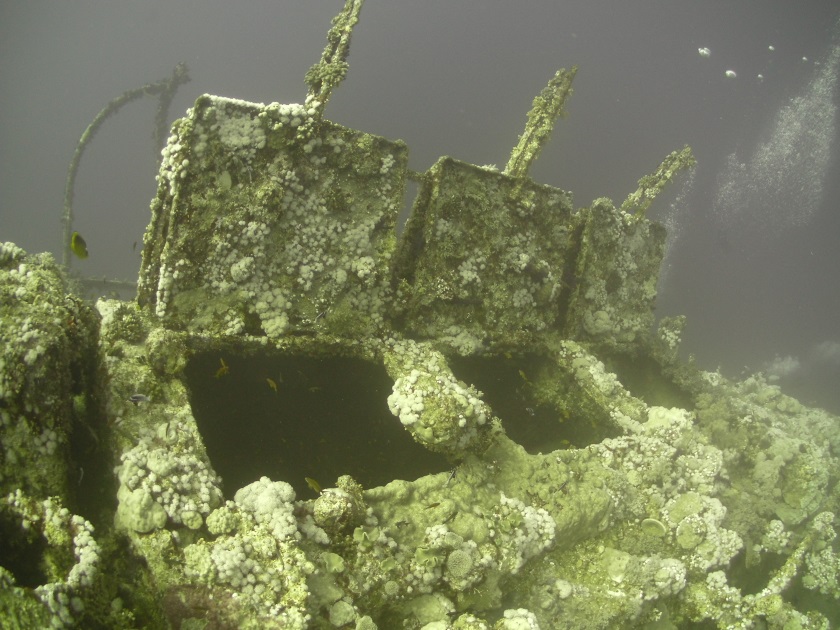
I think by this time that if anyone had asked me which was my favourite Red Sea wreck it would be Rosalie Moller, the sheer exuberance of diving her, her near pristine condition, and the fact fewer divers dived Rosalie at that time would have been enough to swing it for me. I hated the fact that inconsiderate, no, moronic dive skippers were attaching their craft to such points as masts and funnels, rather than far stronger points such as mooring bollards. I hated the fact that after a mere 2 years the stern mast had been brought down, I hated the fact that someone was moron enough to try to drag a steam whistle off a funnel using a boat to try to wrench it away…….All these things, and far more, are really things that diving as an industry needs to address…… If any dive boat skipper was to do such things in the Great Lakes of Canada and the USA they would be prosecuted, small wonder there are still wooden wrecks with telegraphs and bells still in place in those lakes……what future is there for wreck diving in the Red Sea…….
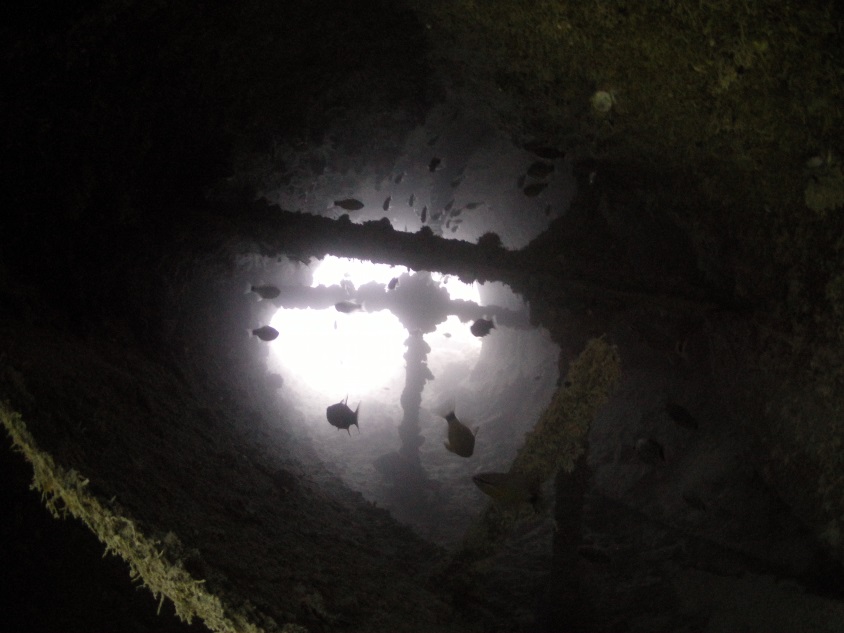
My next dives on Rosalie Moller would be in 2013 and another amazing skipper, this time Blue O2 off “Melody” another excellent and modern Liveaboard with everything you could expect and great food too, no chance of coming back slimmer off this trip! But I digress… the Green Book says: “30/07/13 NIGHT DIVE – ROSALIE MOLLER- RED SEA! This is the first time I know that anyone has done a night dive on Rosie!! What a privilege it is! Down a shot to the No 4 hold at the stern then round the stern deck house along the starboard rail the full length of the ship with all the deck rails festooned with brittle star anemones & fan corals all out and blazing with colour the whole way. Past the holds to the Bridge deck accommodation & the lifeboat davits, past the winches & on to the bow over the fallen mast area & bomb damage to the bow deck house (chain locker) & over those to the bow itself then back to the main for’ard mast where the shot was for ascent. Great view of the bow as we ascended to deco & a whole sky of stars as we surfaced MAGICAL DIVE Air In 200 Out 100 Buddy Craig” It should be clear by now that Rosalie Moller was without doubt my favourite dive, no two ways about that, she had just had an effect that still lasts to this day, if I could only dive one wreck ever again then, to this day, it would be Rosalie Moller. I should add that surfacing to a completely cloudless and beautifully moonlit sky, with the heavens lit across the whole horizon with tiny twinkling stars was like nothing on Earth….the feeling of being in the sea, but beneath the heavens on a tiny rock in one of, who knows how many Universes, was just……..well……..indescribable really, I truly lack sufficiently eloquent or profound enough words

The Captain of Melody asked if we would like to stay for a second dive the next morning or depart first thing, I don’t think a soul on board wanted to leave Rosalie Moller so the next morning, bright and early, we were back down to say farewell……. “ROSALIE MOLLER – RED SEA- A daytime return to the stern and first off the shot at No4 hold over the steering room & down the port side to go through the prop & rudder a run back over the starboard side to look and dive through the small galley (stove or bench) and then into the hatch to access the lower deck for a run from Port to No3 hold & across the decks to exit the bomb damage @ No ¾ hold. Through the blast hole & over the mast & deck to pick up the shot & deco out Air In 200 Out 100 Buddy Craig” This was one of those “Even better than that” Fast Show days as we managed to convince the captain to stay on Gubal until after lunch and allow us a third dive on Rosalie……could life get any better…… “31/07/13 Rosalie Moller – Red Sea Second day dive this time the bow area – down the bow shot to look at the Hawsed Port anchor then through the forecastle chain lockers & winch gear to drop down into No1 hold & pass through to No2 hold then up into the Bridge accommodation area, through the galley & workshop & across to the store & bunk rooms then out at the bridge front to do the funnel & the bridge roof before heading down the centre line over the midships & stern to deco on the stern shot – an excellent dive!! Viz 10m Air In 200 Out 100 Buddy Craig”
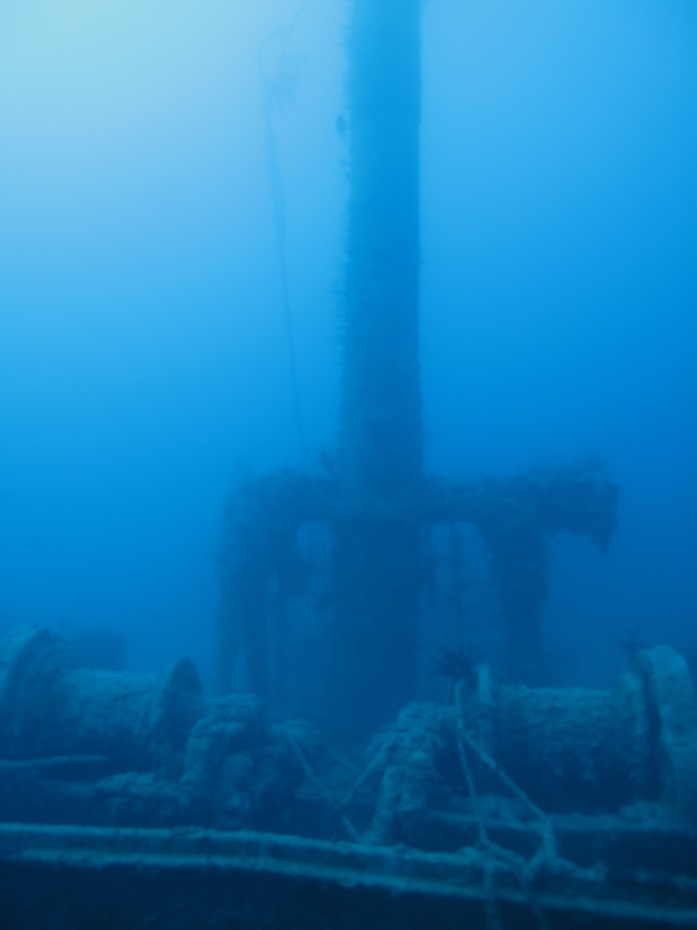
There were several more dives on Rosalie taking similar routes in 2015 “02/08/15 Rosalie Moller Red Sea an early start on Rosalie my favourite Red Sea dive down to the stern & a drop over to see the prop – three of four blades intact – 1 missing. We swam gently up the starboard side to the bomb damage & used it to enter the stern holds & swim round the tween decks to exit by the crew & officers bridge accomm block – down the gangway & out to the funnel & if I had no side-mount I swear I could do the funnel end to end! Swam in and round the bridge & forward hold for a while up & down the deck to swim the opposite (port) gangway & across the deck to the forward hold then on & up the bridge to the shot line & up to 6m for 30 minutes of deco which we incurred as we spent a fair part of the dive @ 35m plus! Deco was made easy when we were joined by 2 or 3 Bat Fish & then tiny jellies which ended up as a huge shoal passing us! Air In 220 Out 75 Viz 20m Buddy Craig”
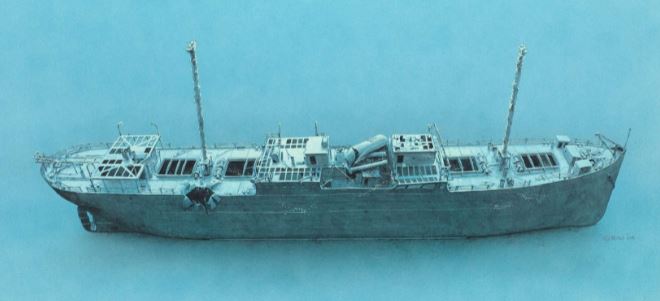
No one quite shows a wreck like Rico Oldfield, of all the illustrators I have seen in 30 plus years of diving Rico is the one who captures a wreck as she sits, as she looks and feels to a diver. The routes I have taken on Rosalie could be traced on Rico’s stunning representation of Rosalie, but why spoil a great work with a bunch of squiggles? I will leave the reader, should they wish, to trace the routes I have described on the marvelous and most iconic of Red Sea wrecks. I have at last come clean and, as you have just read, described Rosalie Moller as “my favourite Red Sea wreck”, I apologise to all the other wrecks in the Red Sea, as most of those are pretty magnificent too, but Rosalie has that “something” which is hard to describe but stands her out from all others. I suppose it is easier to look at in this way, if you sign up for a Red Sea wreck diving Liveaboard you are pretty excited and the anticipation is high enough, but if the skipper hasn’t got Gubal Island on the itinerary you feel let down, it’s not that you won’t enjoy the dives, it’s not that you won’t have a great time, it’s just there will be “something” missing…..the Cherry on the top…..that’s what Rosalie Moller is…….the Cherry on the top of the Red Sea wrecks
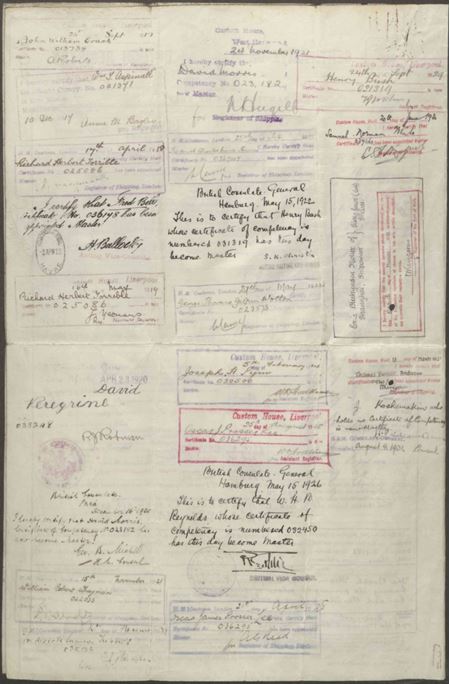
My last dive on Rosalie was taken on the afternoon of the 02nd August of 2015 and the Green navy Log records: “02/08/15 ROSALIE MOLLER Gubal Island Red Sea this tour began at the stern but going for’ard we swam the starboard side to the bow & then swam in to the hawsed anchor & over onto the bow deck where we ran the chain lines & dropped between decks in the for’ard hold – a swim round that then to the bridge & in & out over the galley & through to the mess bathroom & down & out to the funnel we spent time over & round the funnel & then over the decks to swim back through the gangway on the starboard mess deck – into & out the bridge & round the mast to end at the stern line & on up to deco – a wonderful dive captured on go-pro – let’s see if it comes out!! Air In 220 Out 100 Buddy Craig”
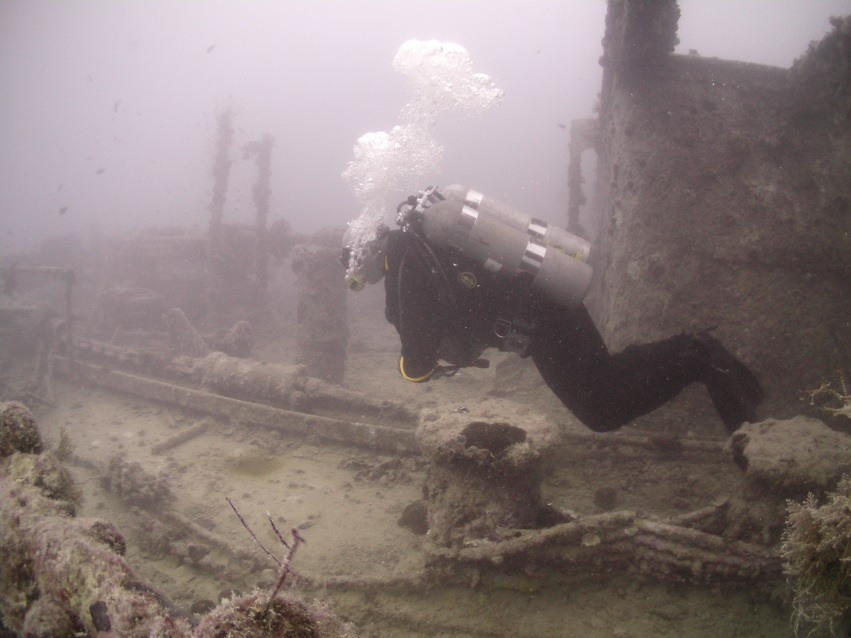
Well…..shall we see if the video came out ok?
As ever this piece is only possible with the help of those who contribute most to it and I am indebted to Derek Aughton & Margaret Blair for their photos, to Craig Toplis for his patience, to Rico Oldfield for his illustration and to Roger Hull and the National Archives for their assistance with data & records
